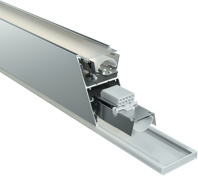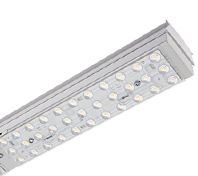On the Palatinate Wine Route, this architectural jewel acts as a lively centre for art and culture. It is a special museum in which LTS can develop its status as a space-creating force.
A parish garden. A heritage-protected environment. A light, simple L-shaped, weightless and simultaneously grounded structure with a flat roof, reminiscent of Mies van der Rohe’s Neue Nationalgalerie. This is the home and creative haven of Wolfgang Thomeczek. In the past, he worked as an international stand constructor. Now, he is an artist in the Palatinate region and this architectural jewel has been a dream come true for him.
The KunstKabinett is a 50 m2 space for art and culture. Accompanied by a 90 m2 exhibition area outside, smoothly transitioning into the garden. With the large window panels and the consistent use of identical linear lighting elements, the inside and outside seem to merge with one another. The Lichtkanal light lines follow the clear architecture and lead the way for visitors.
Spotlights from the Bixx series skilfully set the scene for the display items, without dominating the space. They are used as track-mounted spotlights and as ceiling-mounted luminaires for a special solution. Depending on the exhibition, they can respond and be adapted to changing display pieces and scenarios in a flexible manner. For a corresponding long-range effect, there is also a Lichtkanal light line with IP in the outer region.










